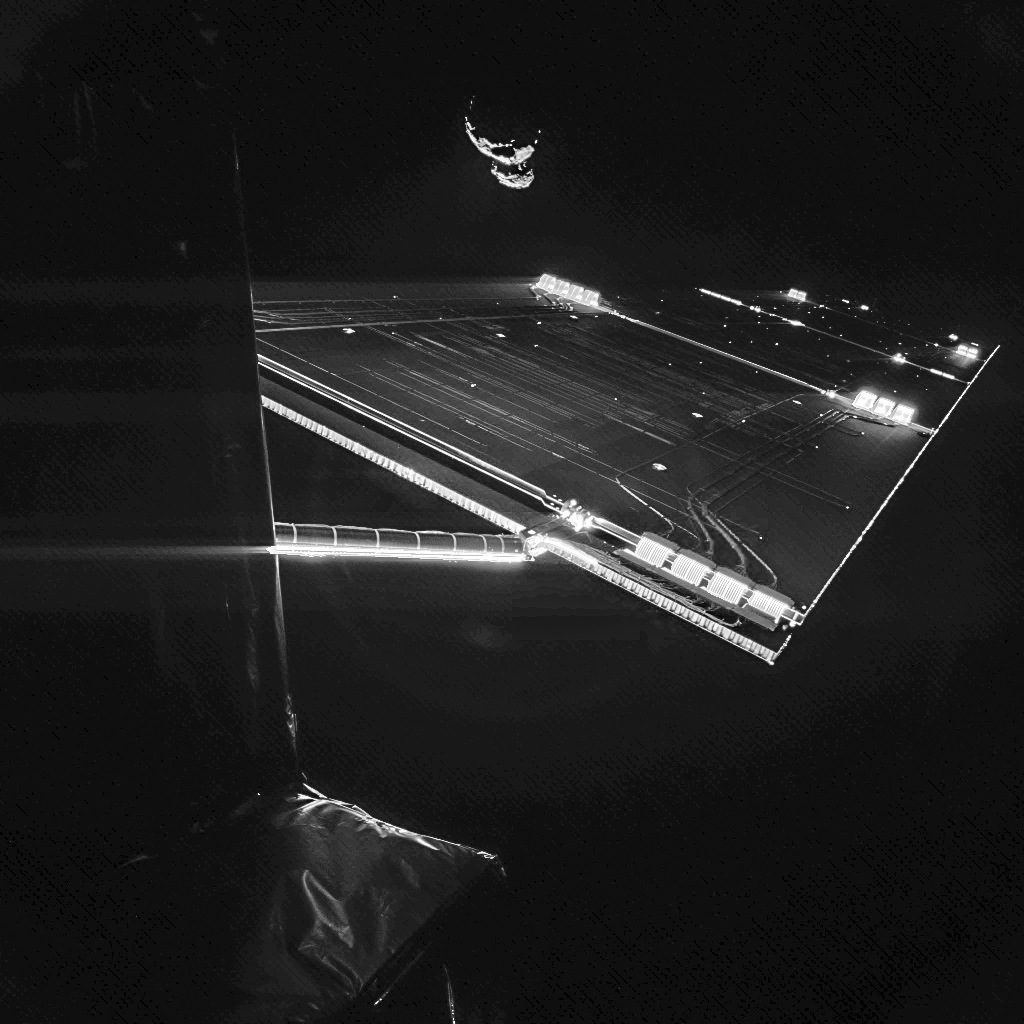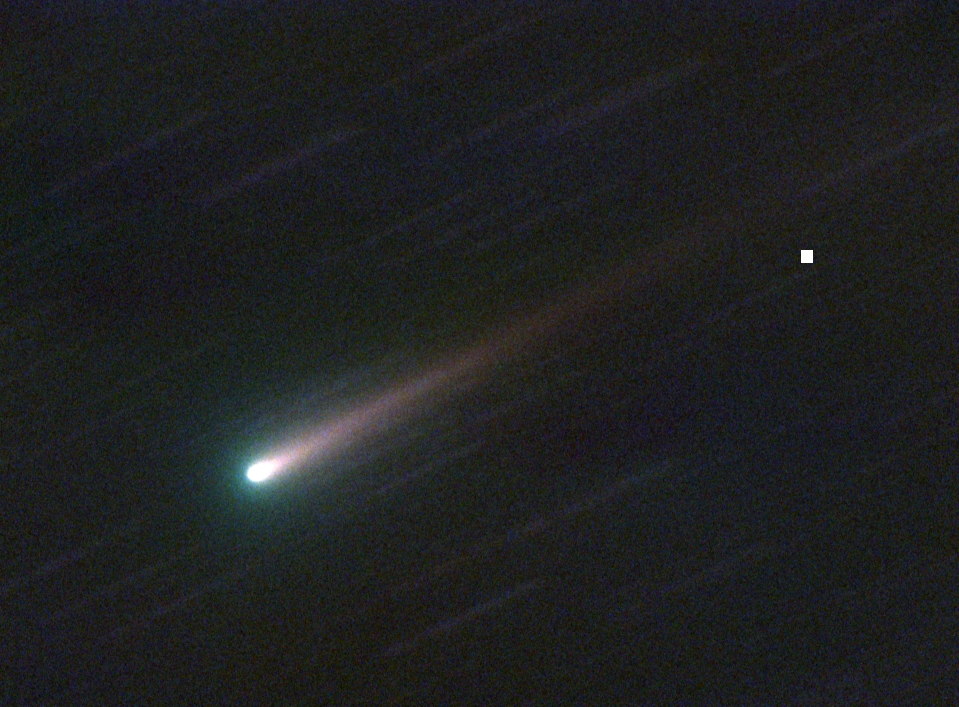Rosetta Spacecraft Snaps Amazing Selfie with Comet Pal (Photo)

It's official: A European spacecraft has snapped a robotic selfie with a comet in deep space.
The Philae lander riding with European Space Agency's comet-chasing Rosetta spacecraft snapped a stunning photo of the spacecraft and its target comet, 67P/Churyumov–Gerasimenko. The image — released by ESA on Wednesday (Sept. 10) — gives viewers a new perspective on the spacecraft and comet flying far from Earth.
The black-and-white photo taken Sept. 7 shows one of Rosetta's solar wings from Philae's perspective with Comet 67P/C-G flying 31 miles (50 kilometers) away. Both the comet's smaller "head" and "body" are clearly visible in the new photograph. [See more incredible photos taken by the Rosetta mission]
"Two images with different exposure times were combined to bring out the faint details in this very high contrast situation," ESA officials wrote in a blog describing the photograph. "The image was taken as part of the preparations being made for Philae, as the lander team gear up for the first ever attempt to land on a comet."
The Philae lander is expected to touch down on the comet's surface in November, and until then, it is flying with Rosetta near Comet 67P/C-G. ESA officials are planning to announce the probe's primary landing site in an event on Sept. 15.
Philae's CIVA instrument (short for Comet Infrared and Visible Analyzer) captured the image. CIVA is one of 10 instruments flying aboard Philae, according to ESA. Rosetta is carrying 11 scientific instruments (not including Philae's experiments).
Scientists hope that Rosetta and Philae will be able to help them learn more about the mechanics of comets — bits of rock and dust leftover from the beginning of the solar system.
Get the Space.com Newsletter
Breaking space news, the latest updates on rocket launches, skywatching events and more!
Rosetta launched on its decade-long journey to the comet in 2004. It arrived at the comet in August, and since then, the probe has been beaming back amazing images of its target. Comet 67P/C-G takes 6.5 Earth years to orbit the sun. Rosetta will fly with the comet on its way toward its closest approach to the star, allowing the probe the unprecedented ability to see how the comet changes as it warms up while flying closer to the sun.
The mission's name comes from the Rosetta Stone — a famous block of rock found with text inscribed in three languages on its face. Philae is named for an obelisk found on an island in the Nile River. The two artifacts helped researchers translate Egyptian hieroglyphics.
Follow Miriam Kramer @mirikramer and Google+. Follow us @Spacedotcom, Facebook and Google+. Original article on Space.com.

Join our Space Forums to keep talking space on the latest missions, night sky and more! And if you have a news tip, correction or comment, let us know at: community@space.com.

Miriam Kramer joined Space.com as a Staff Writer in December 2012. Since then, she has floated in weightlessness on a zero-gravity flight, felt the pull of 4-Gs in a trainer aircraft and watched rockets soar into space from Florida and Virginia. She also served as Space.com's lead space entertainment reporter, and enjoys all aspects of space news, astronomy and commercial spaceflight. Miriam has also presented space stories during live interviews with Fox News and other TV and radio outlets. She originally hails from Knoxville, Tennessee where she and her family would take trips to dark spots on the outskirts of town to watch meteor showers every year. She loves to travel and one day hopes to see the northern lights in person. Miriam is currently a space reporter with Axios, writing the Axios Space newsletter. You can follow Miriam on Twitter.
